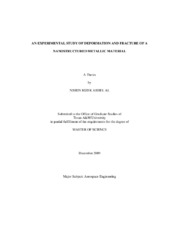| dc.description.abstract | The mechanical properties of materials strongly depend on their microstructure. Therefore, engineering the material's microstructure can lead to improving its
mechanical properties. One method for enhancing the strength of metallic materials consists of refining the grain size down to the nanometer scale. Such nanostructured materials possess remarkable strength without using conventional metallurgical strengthening methods. However, this strength often comes at the expense of workhardening capacity, thus favoring flow localization and loss of ductility and toughness.
The deformation behavior of nanostructured metallic materials has been extensively studied in the literature. However, little is known of their fracture behavior. In this study, the mechanical behavior of a nanostructured, nearly pure material is investigated in order to link processing conditions, microstructure, and fracture locus in stress space. With focus laid on BCC materials which can undergo a ductile-to-brittle transition, Interstitial-
Free (IF) steel is chosen. The microstructure is refined using Severe Plastic Deformation (SPD) to achieve ultra-fine grain (UFG) materials with grain sizes in the range 100nm- 1 mu m. Equal Channel Angular Extrusion (ECAE) is used to obtain three types of UFG-IF steel microstructures by varying the extrusion rate and processing temperature. The deformation behavior is investigated for the three UFG materials using round smooth bars and is compared with the behavior of the as-received material. The damage behavior and the fracture mechanisms are studied using tensile round notched bars with varying notch radii. The findings indicate a remarkable combination of strength and
notch ductility at room temperature, including for the material with the finest microstructure. They also point to the need for careful characterization of temperature
effects before such materials can be considered in structural applications. | en |


